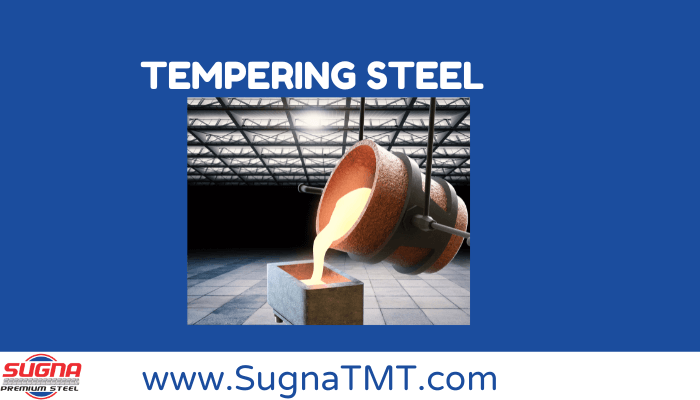Tempering steel is a critical process in metallurgy that enhances its strength and durability, making it suitable for use in long-lasting structures. By subjecting steel to controlled heating and cooling cycles, tempering modifies its microstructure, improving toughness and reducing brittleness. In this article, we’ll explore the importance of tempering steel, its benefits, and the methods used in this essential metallurgical process.
What is Tempering Steel?

Tempering steel is a heat treatment process that follows the hardening process, where steel is heated to a specific temperature and then cooled in a controlled manner. This process alters the internal structure of the steel, relieving internal stresses and refining the grain structure. The result is a material that exhibits improved strength, toughness, and ductility, making it more resistant to fractures and fatigue failure.
Benefits of Tempering Steel
Enhanced Toughness
One of the primary benefits of tempering steel is enhanced toughness. Tempered steel exhibits a balanced combination of hardness and toughness, allowing it to withstand impact and deformation without fracturing. This property is particularly crucial in structural applications where the material is subjected to dynamic loading and varying environmental conditions.
Reduced Brittleness
Tempering reduces the brittleness of hardened steel, making it less prone to sudden fracture or failure. By relieving internal stresses and refining the grain structure, tempering enhances the ductility of the steel, allowing it to deform plastically before reaching its ultimate tensile strength. This improved ductility makes tempered steel more forgiving under stress, preventing catastrophic failures in critical applications.
Improved Machinability
Tempered steel is easier to machine and process compared to fully hardened steel. The reduction in hardness and brittleness achieved through tempering allows for more efficient cutting, drilling, and shaping operations. This is particularly advantageous in manufacturing processes where intricate shapes and precise tolerances are required, such as in the production of machine parts and tooling.
Methods of Tempering Steel
Air Tempering
Air tempering is the most straightforward method of tempering steel, involving heating the material to a specific temperature and allowing it to cool in ambient air. This method is suitable for achieving moderate hardness and toughness levels and is commonly used for general-purpose applications where precise control over properties is not required.
Oil Tempering
Oil tempering involves heating the steel to the desired temperature and then quenching it in oil to achieve rapid cooling. This method produces a tougher and more ductile material compared to air tempering, making it suitable for applications requiring higher levels of toughness and impact resistance.
Water Tempering
Water tempering is similar to oil tempering but involves quenching the steel in water instead of oil. This results in even faster cooling rates and produces a material with higher hardness and strength. Water tempering is commonly used for applications where maximum hardness and wear resistance are required, such as in tool and die manufacturing.
Conclusion
Tempering steel is a crucial heat treatment process that enhances the strength, toughness, and durability of steel components for long-lasting structures. By carefully controlling the heating and cooling of steel, tempering achieves the desired balance between hardness and toughness, ensuring optimal performance under a wide range of conditions. Whether through single or double tempering techniques, the tempering process plays a vital role in the manufacturing of high-quality steel products for various industries.

